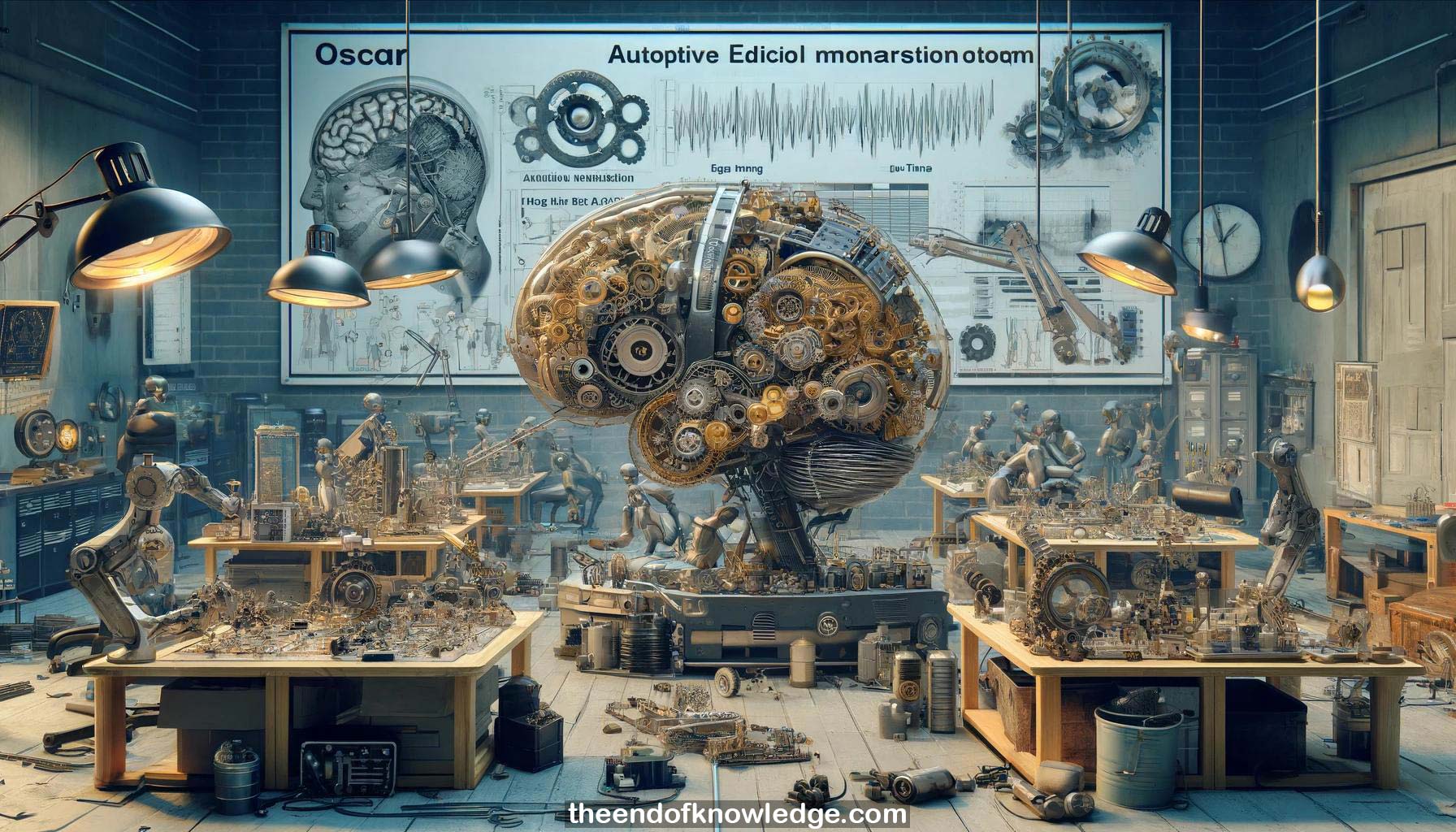 >
>
Concept Graph & Resume using Claude 3 Opus | Chat GPT4 | Llama 3:
Resume:
1.- Johannes Gruenwald demonstrates artifact removal in EEG data using the OSCAR method to remove movement, EMG, eye movement artifacts and more.
2.- Artifacts in EEG/ECoG can be physiological/electrical and transient/permanent, with common types being EMG, EOG, ECG, cable movement, and stimulation artifacts.
3.- Pathological activity like epileptic spikes is difficult to distinguish from artifacts based on amplitude and spectral characteristics and may get removed.
4.- OSCAR aims to eliminate artifacts, preserve brain activity, recover BCI performance, provide signal quality feedback, produce realistic EEG, and work automatically in real-time.
5.- OSCAR decomposes signals into frequency bands, buffers them, performs spatiotemporal whitening, identifies and removes artifact components, inverts whitening, and reconstructs signals.
6.- OSCAR is unsupervised, adaptive, automated, and targets specific use cases with three versions: OSCAR Live, OSCAR Pro, and OSCAR BCI.
7.- OSCAR Live provides real-time, low-latency artifact removal for standard EEG up to 64 channels, optimizing source signal reconstruction.
8.- OSCAR Pro does offline EEG/ECoG artifact removal without channel/bandwidth limits, optimizing source signal reconstruction using larger processing windows.
9.- OSCAR BCI provides real-time artifact removal optimized for ERP-based BCIs like P300 spellers, operating in the spatiotemporally whitened space.
10.- OSCAR Live is being integrated into g.tec's g.Nautilus, g.HIamp, g.USBamp amplifiers and recorders. OSCAR Pro will be in g.BSanalyze.
11.- Johannes demonstrates real-time artifact removal with OSCAR Live using a 16-channel g.Nautilus while moving and talking, showing effective corrections.
12.- An oddball visual evoked potential paradigm is demonstrated with OSCAR Live, showing consistent responses despite movement artifacts.
13.- OSCAR Pro focuses on profound offline artifact removal, aiming to reconstruct the source signal underneath artifacts.
14.- Synthetic datasets with known reference signals were created by applying artifact templates to clean EEG to assess OSCAR Pro's source reconstruction.
15.- Visually, OSCAR Pro's cleaned signals closely match the artifact-free reference signals, even preserving underlying oscillations like alpha rhythms.
16.- Quantitatively, OSCAR Pro greatly improves similarity (R^2) between cleaned and reference signals across frequency bands, especially in artifact-contaminated segments.
17.- OSCAR Pro was evaluated on 1,500 synthetic datasets with combinations of natural/provoked artifacts, contamination levels, subjects, and repeated realizations.
18.- OSCAR Pro substantially improves R^2 between cleaned and reference signals in contaminated segments across delta, theta, alpha, beta bands and broadband EEG.
19.- The impact of OSCAR Pro on BCI performance was evaluated using datasets with real artifacts from auditory and visual P300 BCIs.
20.- BCI performance is compared between contaminated, OSCAR Pro cleaned offline, and OSCAR BCI cleaned real-time signals using cross-validated classification.
21.- For auditory EPs, OSCAR Pro improved accuracy from 47% to 60%, and OSCAR BCI to 65% across 15 subjects.
22.- For visual P300, OSCAR Pro improved accuracy from 66% to 71%, and OSCAR BCI to 77% across 10 subjects.
23.- A demo video shows OSCAR BCI used in a real-time P300 BCI game called BrainBuddy developed by Martin Spüler.
24.- In summary, OSCAR versions address most of the initially defined goals for an ideal EEG artifact removal tool.
25.- OSCAR can remove pathological activity like epileptic spikes that deviate from normal EEG characteristics.
26.- OSCAR outperforms methods like ASR (artifact subspace reconstruction), recovering signals better in online scenarios.
27.- OSCAR does not use deep learning - it relies on statistical signal properties.
28.- Specific artifact types can't be excluded, but clean and original signals can be subtracted to isolate artifacts like eye blinks.
29.- The OSCAR algorithm is integrated into g.tec's hardware systems for efficiency and is not open source.
30.- OSCAR's performance is robust to different channel counts, with a 16-channel "sweet spot". Up/downsampling may introduce issues.
Knowledge Vault built byDavid Vivancos 2024